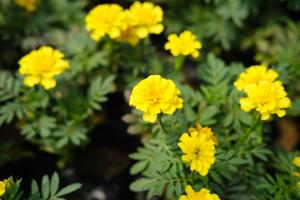When Should I Plant a Redbud Tree?
Redbud trees, with their pinkish-purple blossoms, are a popular choice for homeowners looking to add a touch of color to their landscape. However, choosing the right time to plant a redbud tree is essential to ensure its successful growth and longevity. In this article, we will discuss the best time to plant a redbud tree, how to prepare the planting site, and tips for caring for your new tree.
Best Time to Plant a Redbud Tree
The best time to plant a redbud tree is in the late fall or early spring. Planting in the fall allows the tree to establish its roots in the cool soil before winter dormancy sets in. This gives the tree a head start in the spring when it begins to grow new leaves and branches. Planting in the early spring is also a viable option as long as it is done before the tree begins to bloom. Avoid planting during the hot summer months when the soil is dry, and the tree is at risk of drought stress.
Preparing the Planting Site
Before you plant your redbud tree, it is essential to select a suitable location. Redbud trees prefer well-draining soil and a spot that receives partial to full sunlight. Avoid planting the tree in low-lying areas where water tends to pool or in locations that are exposed to strong winds. Clear the planting site of any weeds or debris and dig a hole that is twice as wide as the root ball and just as deep. Mix compost or other organic matter into the soil to improve drainage and add nutrients.
Planting Your Redbud Tree
When you are ready to plant your redbud tree, remove it from its container and carefully loosen any tangled roots. Place the tree in the center of the hole and backfill it with soil, tamping it down gently as you go to remove any air pockets. Water the tree thoroughly, and apply a layer of mulch around the base, but avoid piling it up against the trunk. Mulch helps to retain moisture and regulate soil temperature while also preventing weed growth.
Caring for Your Redbud Tree
Proper care is essential to ensure the success of your redbud tree. Water it regularly during the first few years, especially during periods of drought, to help it establish a strong root system. Redbud trees are relatively low-maintenance, but they benefit from an annual application of fertilizer in the spring. Prune the tree in the winter to remove any dead or damaged branches and shape it as desired. Keep an eye out for pests and diseases that can harm your tree and take action promptly if you notice any signs of trouble.
Conclusion
Planting a redbud tree can provide years of enjoyment and beauty to your landscape. By choosing the right time to plant, preparing the planting site, and providing proper care, you can ensure that your new tree thrives and grows for years to come. With a little effort and attention, you can enjoy the stunning colors and delicate blossoms of your redbud tree for many years to come.

 how many times do yo...
how many times do yo... how many planted tre...
how many planted tre... how many pine trees ...
how many pine trees ... how many pecan trees...
how many pecan trees... how many plants comp...
how many plants comp... how many plants can ...
how many plants can ... how many plants and ...
how many plants and ... how many pepper plan...
how many pepper plan...































